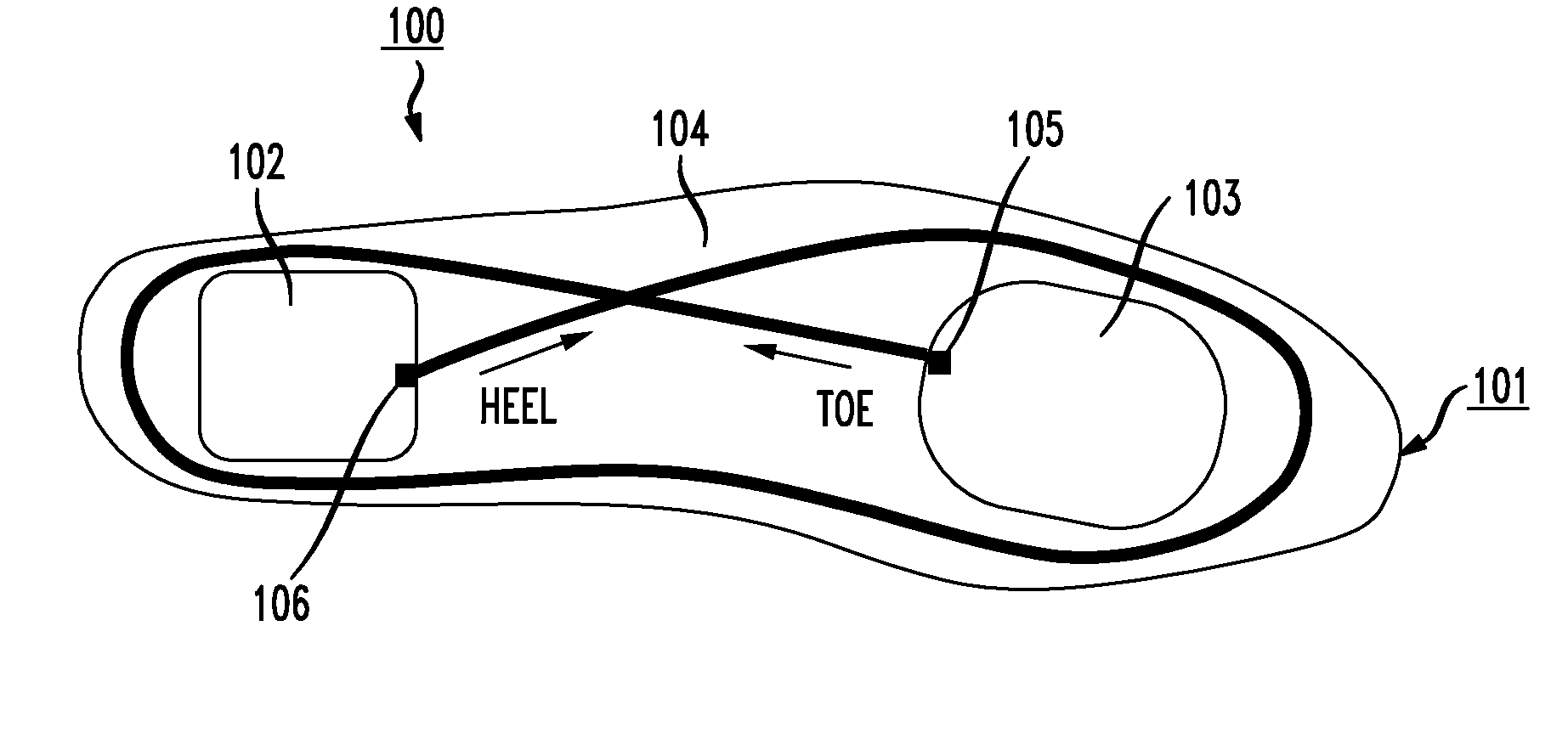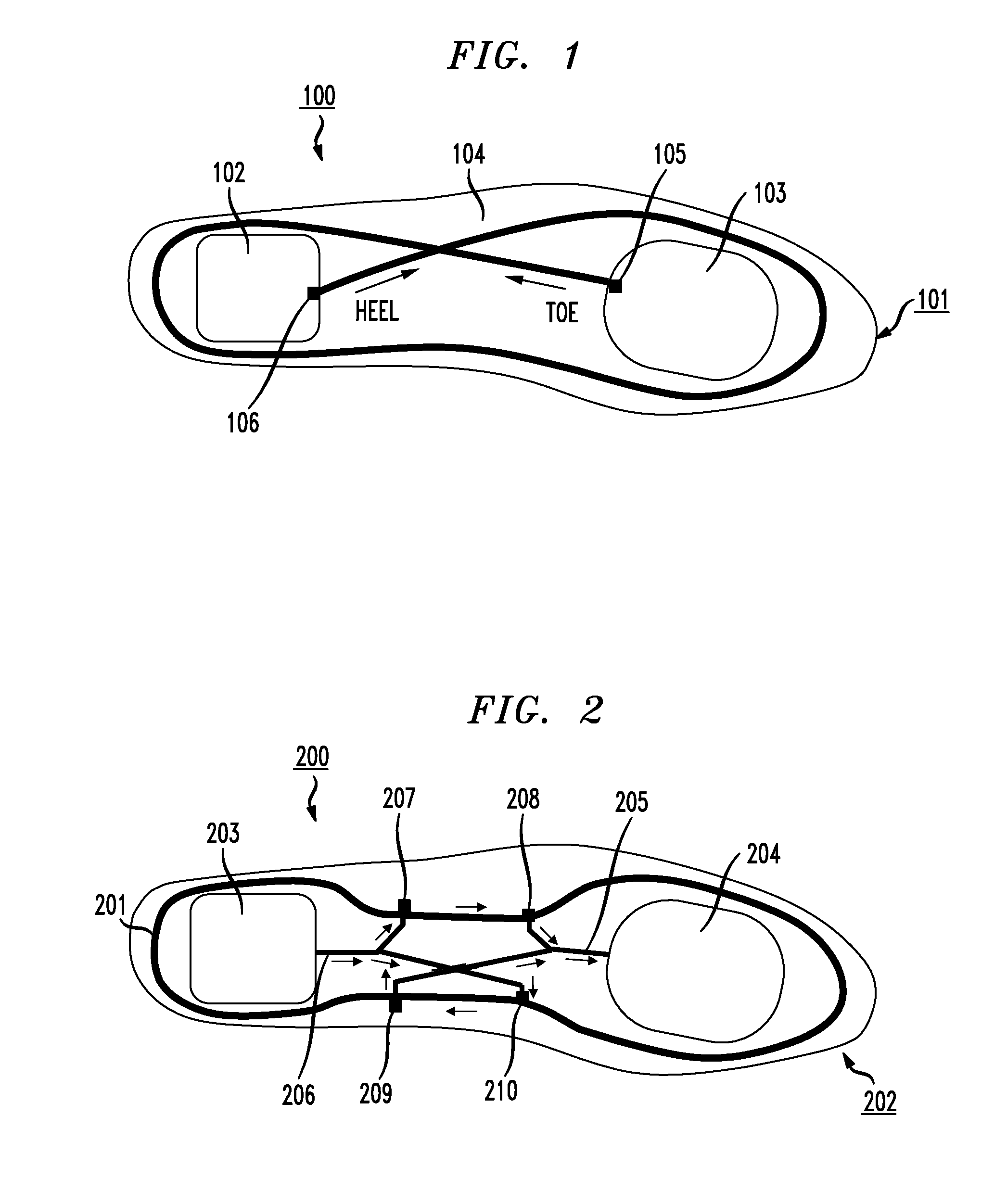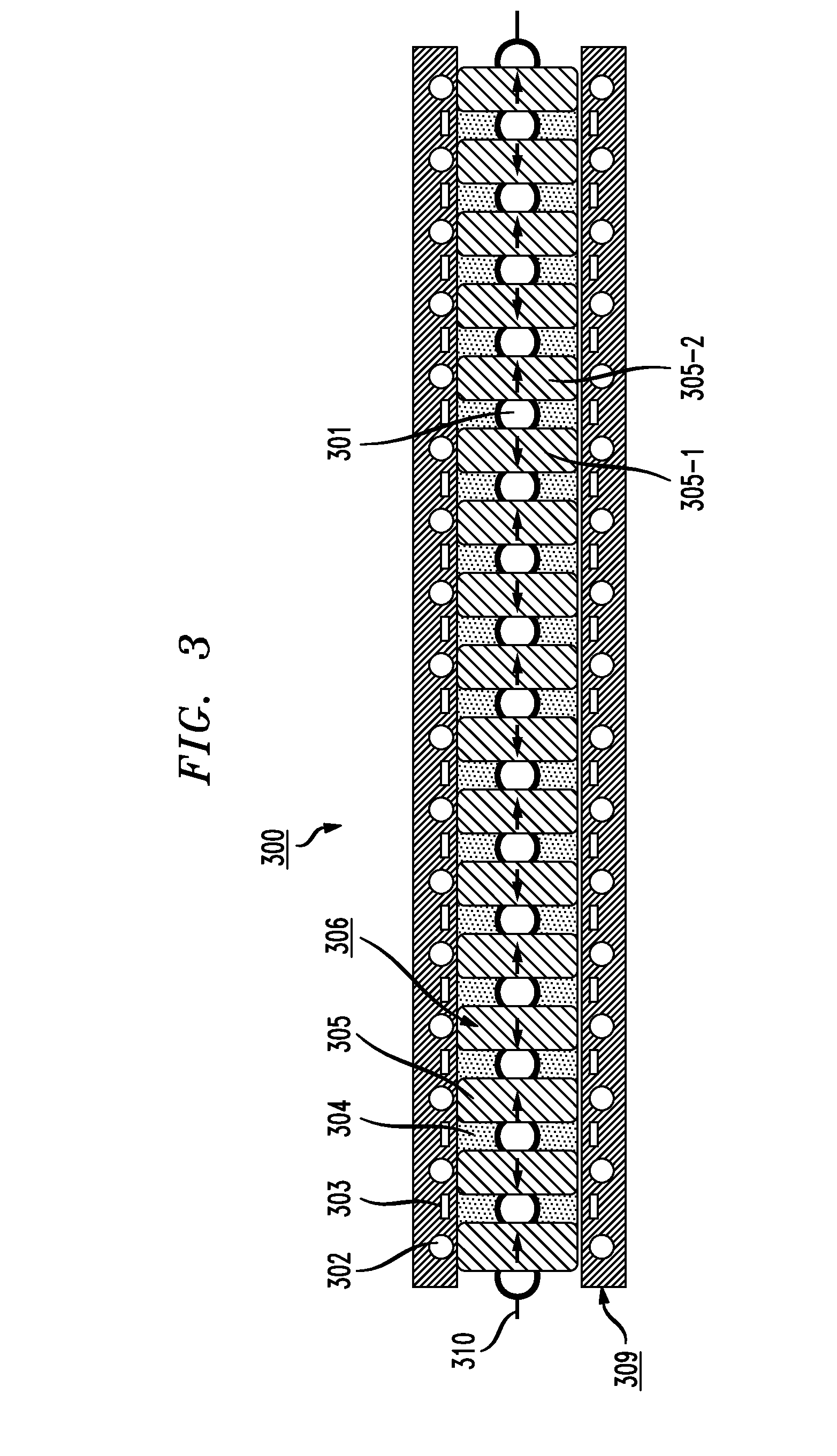Apparatus For Footwear-Embedded Mechanical Energy Harvesting Using Modular Elements
- Summary
- Abstract
- Description
- Claims
- Application Information
AI Technical Summary
Benefits of technology
Problems solved by technology
Method used
Image
Examples
Embodiment Construction
[0041]Prior to explaining the details of the “modular” construction of the energy harvester of the present invention, it is considered useful to review the prior types of energy-producing arrangements that have been developed and described in the above-referenced patents. FIG. 1 presents a two-dimensional schematic view of one exemplary embodiment of an apparatus 100 for capturing mechanical energy from human locomotion and converting it into electrical energy. Apparatus 100 is configured to produce reciprocating motion of an energy-producing chain inside an energy-producing channel as will be discussed in detail below.
[0042]In particular, apparatus 100 comprises an energy-producing channel 104, within which slides an energy-producing chain (not shown). In most arrangements, alternating sets of energy-producing dielectric-coated electrodes and energy-producing conductive coils are formed along the length of energy-producing channel 104. Referring to FIG. 1, apparatus 100 is seen to ...
PUM
 Login to View More
Login to View More Abstract
Description
Claims
Application Information
 Login to View More
Login to View More - Generate Ideas
- Intellectual Property
- Life Sciences
- Materials
- Tech Scout
- Unparalleled Data Quality
- Higher Quality Content
- 60% Fewer Hallucinations
Browse by: Latest US Patents, China's latest patents, Technical Efficacy Thesaurus, Application Domain, Technology Topic, Popular Technical Reports.
© 2025 PatSnap. All rights reserved.Legal|Privacy policy|Modern Slavery Act Transparency Statement|Sitemap|About US| Contact US: help@patsnap.com



